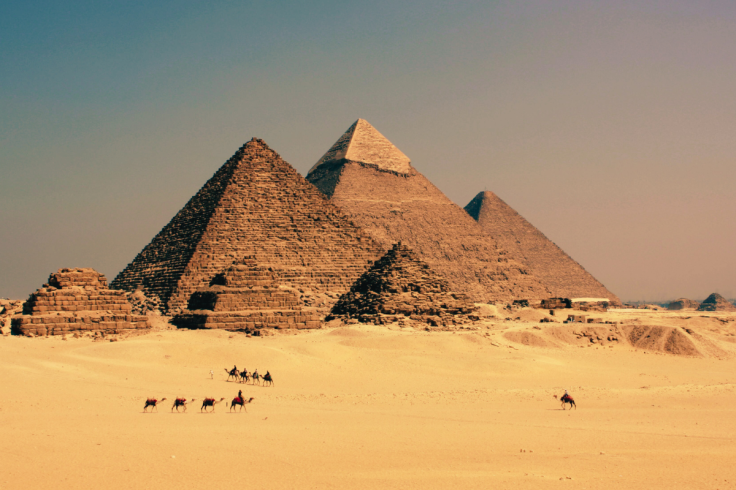Giza Pyramid Tourist Overcrowding Woes: Travellers Rage Over Pyramid Chaos and Animal Cruelty
Tour buses clog the historic entrance near Marriott Mena House, while aggressive touts hound visitors for camel rides or souvenirs

The Pyramids of Giza, Egypt's iconic 4,500-year-old wonders, draw millions annually, with 15.7 million tourists visiting in 2024 alone. But the UNESCO World Heritage Site is buckling under its own popularity.
Overcrowding, aggressive vendors, and shocking reports of animal cruelty have turned dream trips into nightmares, sparking outrage among travellers. On 25 April 2025, Egypt unveiled a £40.8 million ($54 million) plan to tame the chaos, but with a rocky start, can it restore the Giza Plateau's magic?
From harassed tourists to abused camels, here's why the pyramids are at a breaking point.
Tackle Overcrowding and Vendor Harassment
The Giza Plateau is a whirlwind of chaos. Tour buses clog the historic entrance near Marriott Mena House, while aggressive touts hound visitors for camel rides or souvenirs. 'You can't walk five metres without being harassed,' one Tripadvisor reviewer fumed, reflecting widespread complaints that Giza has become a 'tourist trap.'
The new Fayoum Highway access point, tested on 23 April 2025, aims to ease congestion, but early hiccups (long queues and poor signage) left travellers frustrated.
Orascom Pyramids Entertainment's £40.8 million ($54 million) project, backed by billionaire Naguib Sawiris, includes online ticketing and a visitor centre with a Kevin Costner-narrated film, per Union Rayo.
Despite these efforts, the sheer volume of visitors i.e up 20% from 2023, overwhelms the site. NAR data shows Giza's infrastructure, designed for 10 million annual tourists, can't handle the surge, leading to hour-long waits and safety concerns.
Many complain of 'no personal space' near the Great Pyramid, with some calling for visitor caps. Without swift fixes, Egypt risks alienating the tourists it desperately needs, as tourism accounts for 12% of GDP.
End Rampant Animal Cruelty
The most heart-wrenching issue at Giza is the treatment of working animals. PETA's 2024 investigation exposed horrific abuse: emaciated horses and camels whipped, starved, and 'ridden to death,' their bodies dumped near the site.
'It's a graveyard for animals,' PETA told The New York Times, urging tourists to boycott rides. Traveller Noémi Haszon fled to her tour bus in tears after witnessing skeletal horses straining under heavy loads. Many on X demanded travel companies cut ties with animal rides, gaining thousands of shares.
Egypt's plan relocates vendors and animals outside the archaeological zone, a move billionaire Naguib Sawiris supports to 'protect tourism's reputation.' Yet, enforcement lags, and camel handlers still operate near the Sphinx.
Veterinary hospitals in Cairo report treating dozens of abused animals weekly, underscoring the crisis. Until stricter regulations and shelters are in place, Giza's animals remain a tragic symbol of mismanagement.
Restore Giza's Global Appeal
Egypt's revamp, set for completion with the Grand Egyptian Museum's opening on 3 July 2025, aims to transform Giza into a world-class destination. Eco-friendly transport, restored tombs, and regulated vendors promise a smoother experience. But travellers remain sceptical.
A New York Times report notes past projects stalled due to political turmoil, and current delays fuel doubts. Travellers question whether the plan will deliver or become another unfulfilled promise.
To win back trust, Egypt must cap visitor numbers, enforce animal welfare laws, and streamline access. The pyramids' allure—evoking ancient pharaohs—deserves better than chaos and cruelty. With global eyes on Giza, this is Egypt's chance to shine or stumble.
© Copyright IBTimes 2025. All rights reserved.





















